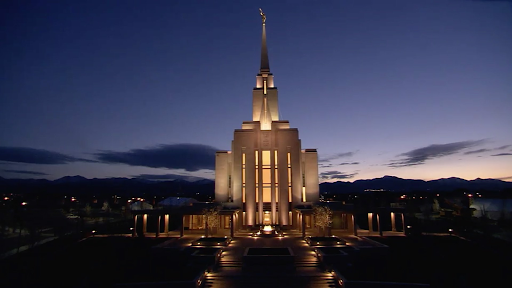
(Image Source: https://www.churchofjesuschrist.org/media/video/2013-02-1070-temples?lang=eng)
Overview
In 2013, Jeremy Runnells, a member of The Church of Jesus Christ of Latter-day Saints (LDS Church), penned what would become known as the “Mormon CES Letter.” This letter was ostensibly written to a Church Educational System (CES) director, and was designed to address Runnells’ burgeoning doubts about the Church’s teachings and history. What began as his personal quest for answers eventually evolved into a lengthy text that has sparked considerable discussion within and outside the Mormon community. This article explores the content of the CES Letter, reactions from LDS Church leaders, and its broader impact on this uniquely American-born Christian denomination.
Content of the CES Letter
The CES Letter is not unique to previous documents criticizing the LDS Church. In the advent of the internet-era is filled a niche to become an immersive and comprehensive compilation of questions and concerns regarding Mormon doctrine, history, and scripture. Runnells meticulously outlines his doubts, honing in on such topics as the translation of the Book of Mormon, the historicity of the Book of Abraham, polygamy, blacks and the Priesthood, and the Church’s stance on homosexuality. Each section refers to historical documents, statements from Church leaders, and extant research generally from other anti-LDS documents and publication, offering up a dense and detailed critique.
A primary concern raised in the CES Letter is the translation process of the Book of Mormon. Runnells casts aspersions on recent translation techniques involving the use of a seer stone and a hat, contrasting this method with more traditional narratives that emphasize the translation of ancient golden plates. Additionally, he insists there is a total lack of archaeological evidence supporting events described in the Book of Mormon.
Additionally, Runnells delves into the controversial practice of polygamy, particularly focusing on Joseph Smith’s multiple wives. Such topics are a long-standing point of contention for this Salt Lake City-based Church. The LDS CES Letter accused the Church of hiding many historical facts, leading some who have felt deceived to feelings of betrayal.
Reactions from Church Leaders
The LDS Church’s response to the CES Letter has been, in some instances, exhaustive and quite detailed. While there is no “official,” response from the Church itself, many faithful scholars and apologists have undertaken the (sometimes gargantuan) task of addressing its content in various forums.
Elder Dieter F. Uchtdorf, a member of the Quorum of the Twelve Apostles, indirectly referenced the CES Letter in a 2016 talk, emphasizing that members ought to, “Doubt your doubts before you doubt your faith.” He urged members to rely on their spiritual experiences and the guidance of Church leaders instead of the perennial factor of external criticisms.
Elder Dallin H. Oaks, another prominent leader, has also addressed the idea of a faith crises. In a 2015 address, Elder Oaks acknowledged that the internet has made it easier for members to encounter information that challenges their beliefs. However, he encouraged members to seek out the many “faith-promoting” sources available online and to focus on their personal spiritual experiences.
The Church has taken important steps in recent years to address some of the historical issues raised in documents like the CES Letter that are available on the Church’s official website, through its “Gospel Topics Essays.” These essays discuss a wide range of topics, such as Joseph Smith polygamy, the translation of the Book of Mormon, and Mormon views on black people. The intent of these essays is to provide greater transparency in hopes that it might satisfy the myriad concerns of Church critics.
The Perspective of Critics
Critics of the LDS Church think of the CES Letter as a prime resource to assist those who are experiencing a faith crisis. They feel these kinds of documents provide a more honest examination of the Church’s history and doctrines. However, defenders of the faith are apt to emphasize flaws inherent in the CES Letter, such as gish-galloping (overwhelming a reader with information), flawed reasoning, and a careful and deliberate effort to obfuscate and exclude pivotal details.
John Dehlin, a former member and founder of the “Mormon Stories” podcast, has been a vocal supporter of the CES Letter. In an interview, Dehlin stated, “The CES Letter has become a touchstone for many who are struggling with their faith. It’s a catalyst for discussion and, for some, a necessary step in their journey towards understanding and personal integrity.”
Another critic, Richard Packham, a former Mormon and founder of the Ex-Mormon Foundation, asserts that the CES Letter exposes gaps between the Church’s narrative and historical reality.
The Broader Impact on the LDS Church
The CES Letter has undeniably had an impact on the Mormon community. For many members grappling with doubts, this letter has served as a catalyst for deeper questioning and, in some cases, departure from the Church. The nature of the internet has been to amplify the letter’s reach, making it accessible globally.
While the Church has gone to considerable effort to publish historical documents in an effort to provide full transparency to the general public, it has, for the most part, left it to faithful scholars, historians, and other Church members to address the overall bias of the CES Letter itself as well as the individuals issues and concerns that the document raises. Such matters are addressed in great details through such online sources as scripturecentral.org, interpreterfoundation.org or fairlatterdaysaints.org.
The CES Letter Mormon phenomenon has prompted a broader conversation about the nature of faith and the role of doubt in religious communities, which, for some, is transformative in prompting a greater appreciation of the Church of Jesus Christ of Latter-day Saints as a fundamental Christian organization that has, like other religions, a complex but ultimately cohesive doctrinal foundation that stands the test of time. However, for others this letter will continue to be a tool for deconstruction and reevaluation of one’s long-held beliefs.
Conclusion
The CES Letter remains a controversial and influential document within the Mormon community. Even as Church leaders have responded with calls for faith and individual spiritual reflection, the letter’s impact continues to be felt.
As the LDS Church navigates this period of increased scrutiny and questioning–a period currently being experienced among many traditional Christian as well as other conservative religious communities, the CES Letter serves as a reminder of complexities inherent in virtually all established faith traditions. If the consequence of documents like the Mormon CES Letter is to highlight the importance of transparency, open dialogue, and the need to address the concerns of members in a meaningful and respectful manner, it can be argued that, in the end, the document will have left an undeniably positive mark on the faith, conviction, and forward-thinking mindset of many members of the Mormon Church.

Fact Checked by Mr. Kevin Prince, Source Expert
Kevin Prince is a religious scholar and host of the Gospel Learning Youtube channel. His channel has garnered over 41,000 subscribers and accumulated over 4.5 million views. Mr. Prince also created the Gospel Learning App, a reliable platform where individuals seeking truth can access trustworthy answers to religious questions from top educators worldwide.
About Mormonism Explained
Mormonism Explained is a resource that was designed to provide objective and factual information about Mormonism, its history, doctrines, and policies. Our team of researchers consults experts and primary sources to present factual information on a variety of topics relevant to the Mormon Church.
Tags

